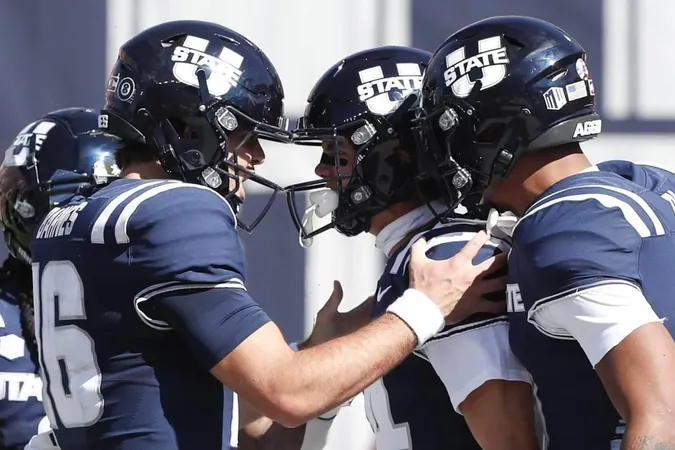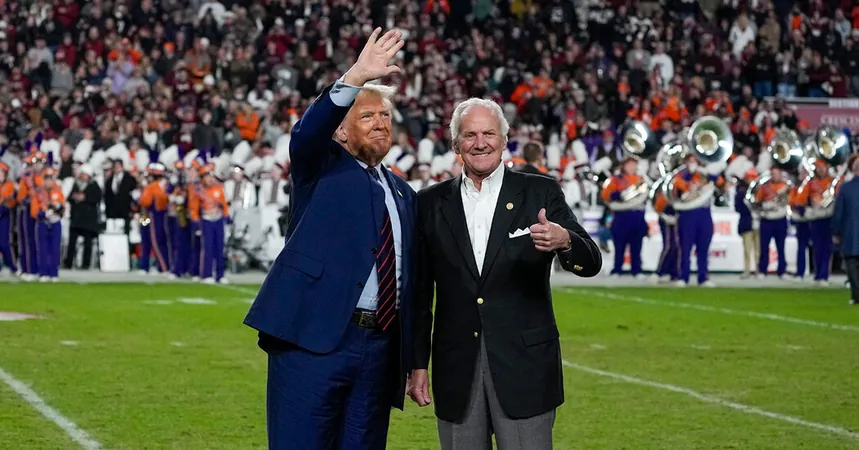
Utah State's Bold Move to Join Pac-12 Escalates College Football Conference Realignment Turmoil
2024-09-24
Introduction
In an unexpected twist in the ongoing chaos of college sports conference realignment, Utah State University has made headlines by agreeing to join the Pac-12, leaving its Mountain West counterpart reeling. This decision comes on the heels of a day filled with strategic maneuvers, as four teams from the American Athletic Conference (AAC) announced their intention to stay put, all while the Pac-12 aggressively sought new members to fortify its position.
Current Situation
As of late Monday night, sources indicated that the addition of Utah State would bring the Pac-12's roster to seven members, a significant uptick since the conference began a reformation phase with only two schools in September. However, both the Pac-12 and Mountain West face a pressing challenge: neither can sustainably operate with just seven members. To maintain their status as recognized NCAA and Football Bowl Subdivision conferences after 2026, a minimum of eight schools is essential.
Mountain West's Efforts
In the days leading up to Utah State's critical decision, the Mountain West was working diligently to secure commitments from its remaining eight members. The incentive? A daunting $111 million in exit fees from the poaching activities of the Pac-12. Key players, including Air Force, reaffirmed their dedication to the Mountain West, hoping to solidify their positions during this turbulent period. But Utah State chose a different course, aligning with the Pac-12 and signaling a possible shift in the landscape of college athletics.
Focus on UNLV
With all eyes now on UNLV, a prime candidate for Pac-12 expansion, the stakes have never been higher. UNLV's status has become a hot topic among fans and analysts alike, particularly after AAC schools Memphis and Tulane opted out of joining due to concerns about travel and financial implications. The scenario becomes even murkier with Gonzaga also in discussions regarding a potential entry into the Pac-12, though their inclusion wouldn't address the pressing need for football-playing members.
Escalation of Tensions
The original plan for a simple addition of Mountain West schools gained traction amid talks for a scheduling agreement. However, tensions flared when the two conferences failed to finalize a schedule by the September 1 deadline, prompting a series of defections. Schools like Boise State, Colorado State, Fresno State, and San Diego State jumped ship, aiming to position themselves with stronger programs and enhanced investment prospects.
Future Considerations
Amidst this upheaval, the Mountain West reportedly discussed possible further additions, such as UTEP, but any concrete actions hinge on stabilizing its current roster. The implications of Utah State’s move extend beyond just numbers; adding another Mountain West school could escalate the Pac-12’s poaching fees to a staggering $67.5 million, in addition to the considerable exit fees already owed by departing members.
Historical Context
History is also repeating itself, as Utah State was previously involved in a destabilizing ploy against the Mountain West back in 2010. This time, however, the Aggies have emerged as the disrupters rather than the followers, highlighting the unpredictable and often precarious nature of collegiate athletics.
Conclusion
As the dust settles from this seismic shift, many in the industry are left scratching their heads. With sources suggesting that more discussions and decisions are imminent, it's a race against time for the institutions involved. The unsettling reality of college football’s financial future looms large, urging schools to make bold moves to avoid being left behind. Expect more developments as Tuesday approaches—will other schools follow suit, or maintain their allegiances amidst this chaotic landscape? The future of college athletics hangs in the balance!




 Brasil (PT)
Brasil (PT)
 Canada (EN)
Canada (EN)
 Chile (ES)
Chile (ES)
 España (ES)
España (ES)
 France (FR)
France (FR)
 Hong Kong (EN)
Hong Kong (EN)
 Italia (IT)
Italia (IT)
 日本 (JA)
日本 (JA)
 Magyarország (HU)
Magyarország (HU)
 Norge (NO)
Norge (NO)
 Polska (PL)
Polska (PL)
 Schweiz (DE)
Schweiz (DE)
 Singapore (EN)
Singapore (EN)
 Sverige (SV)
Sverige (SV)
 Suomi (FI)
Suomi (FI)
 Türkiye (TR)
Türkiye (TR)